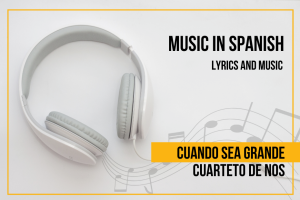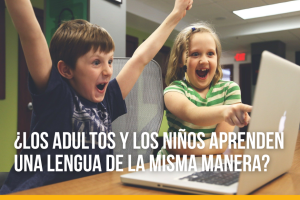By: Georgina Palencia
You already know that I am an actress, and it seems that it’s something I don’t hide because as soon as I’m with a group of new students, they tell me, “You could do theater.” And there you go, it’s my moment to share a bit about that other phase of me that I’m also passionate about. Surely, they say it because of my gestures and movements in the classroom, which, after all, is a stage for me.
But I also bring acting concepts and practices into Spanish as a second language class. And that’s what I want to talk to you about today, specifically the concept of the fourth wall and the practices that I and the teachers at @spanishperfecto do to break it.
It’s no secret that Spanish classes generally take place, excluding virtual ones, within the four walls of the classroom, but the actual use of Spanish always happens outside of them. And outside of them is where the Spanish learner seems to lose the confidence they feel when speaking Spanish inside the classroom and with their teacher. Follow me in this idea, which I hope will come to a good conclusion.
The fourth wall is a term that describes the imaginary invisible wall that is in front of the stage in a theater, through which the audience sees the performance of the characters. In other words, it separates the life of the characters from the audience. And although this idea originated in theater, it has been carried over to other media: television series, movies, video games, comics.
Denis Diderot, a philosopher and theater critic, created the concept, which was later taken up in the 19th century with realistic theater by the actor and director André Antoine, who wanted to recreate credibility on stage.
Since then, the term “breaking the fourth wall” is used to refer to the action of one or more characters interacting with the viewing audience. A good example is Malcolm in the series Malcolm in the Middle, do you remember? He talks to the viewer about what he’s thinking. And others who are experts at breaking the fourth wall are The Simpsons. In the Netflix series Narcos, the protagonists speak to the audience about the history of drug trafficking through voice-over, and that is also a way of breaking the fourth wall.
There are many more examples that, by narrative or aesthetic logic, apply and adapt the concept. Now I want to bring it here so that Spanish teachers and students, and language learners in general, insist more on the strategies we have at hand to break the fourth wall, both inside and outside the four walls of the classroom.
A part of the concept of breaking the fourth wall that particularly interests me is when the character becomes aware that they are a character, momentarily ceasing to play their role. If we apply this to the process of learning Spanish, it’s the moment when the learner says to themselves, “Okay, I’m not studying Spanish, I’m using it.” In other words, they transition from the role of a student to that of a speaker.
Note that with these lines, I’m not proposing new practices. What I want, with this analogy and adaptation of the concept to teaching Spanish as a second language, is to emphasize the importance of certain practices for the Spanish learner to train in speaking to the real audience who listens to them, which is also a real representation of the people they will interact with in real life.
What practices should we promote more and more?
In addition to role-playing games, phone calls with specific purposes, interviews, recordings about absolutely everything: their daily routines, moments when they cook, explanations of the exercises they do at the gym, the decoration of their homes, everything. As a central part of the process, they should give oral presentations. They should record their voices alone, expressing their thoughts of the day. Those who write a journal can now do it in Spanish. They can dub characters in animated shorts. They can engage in real-life practices like going to markets, restaurants, or places where a Spanish-speaking person provides a service… Anything that involves the idea of exposing oneself to others and communicating with others. None of this should be occasional, but rather a constant practice.
We should create in the school a sense of community in the Hispanic territory, promoting greetings, farewells, and brief conversations among the students, regardless of their level.
Creating an Instagram or Facebook account, or a TikTok or a blog in Spanish, is a high degree of exposure nowadays, and it would be like demolishing the fourth wall with dynamite in the process of learning another language. Who dares to do it?
To summarize, in theater, actions take place within three walls, one on the left, one on the right, and one at the back. Figuratively speaking, the fourth wall is the one that separates the audience from what happens on stage. But if suddenly an actor addresses the audience to ask for their participation, or if the script requires interacting with the viewers, then it is said that the fourth wall is being broken. This is what I invite both teachers and students to do, to strike strong blows to that fourth wall of the classroom, and to expose themselves by forgetting the role of students and embracing more and more the role of speakers.
Bye!


